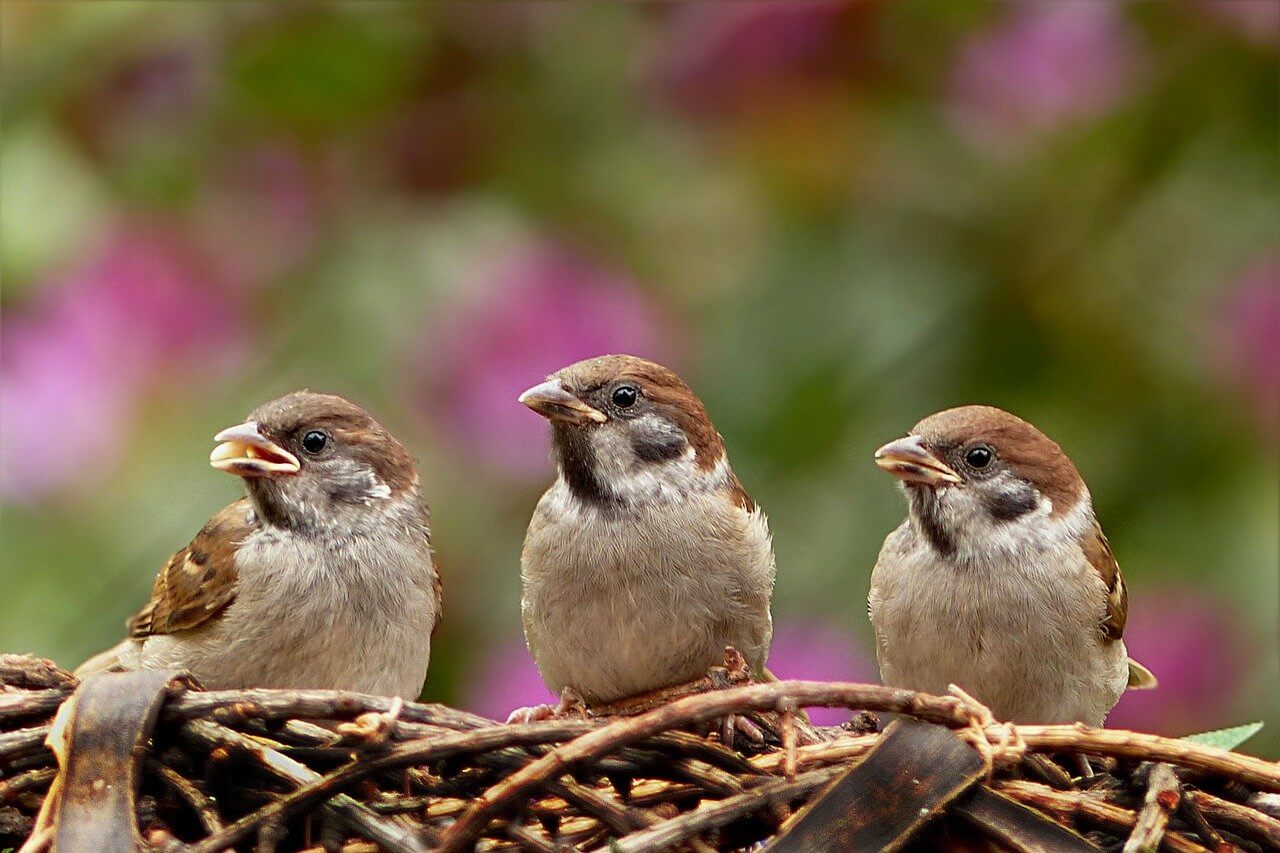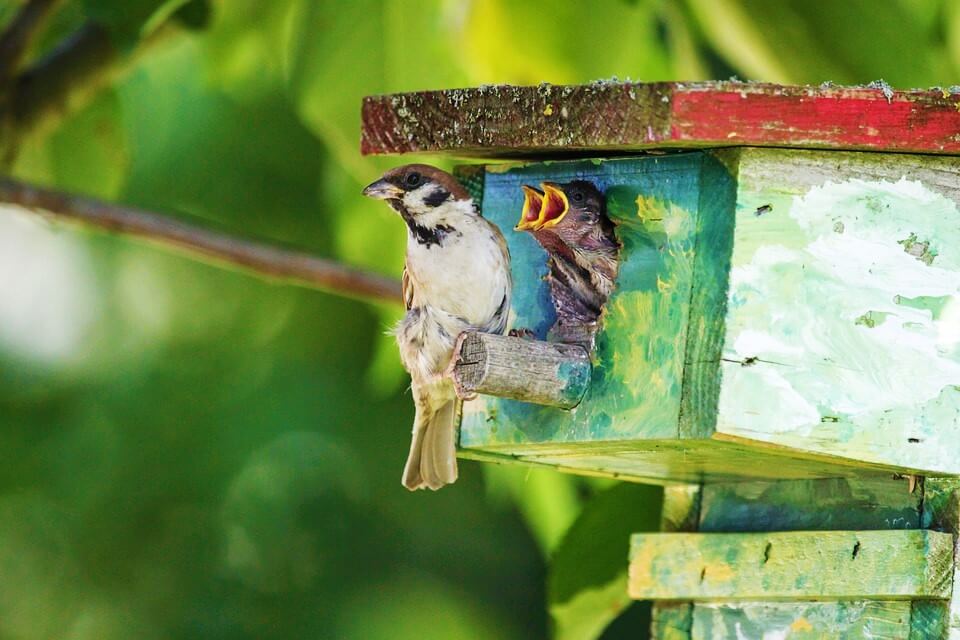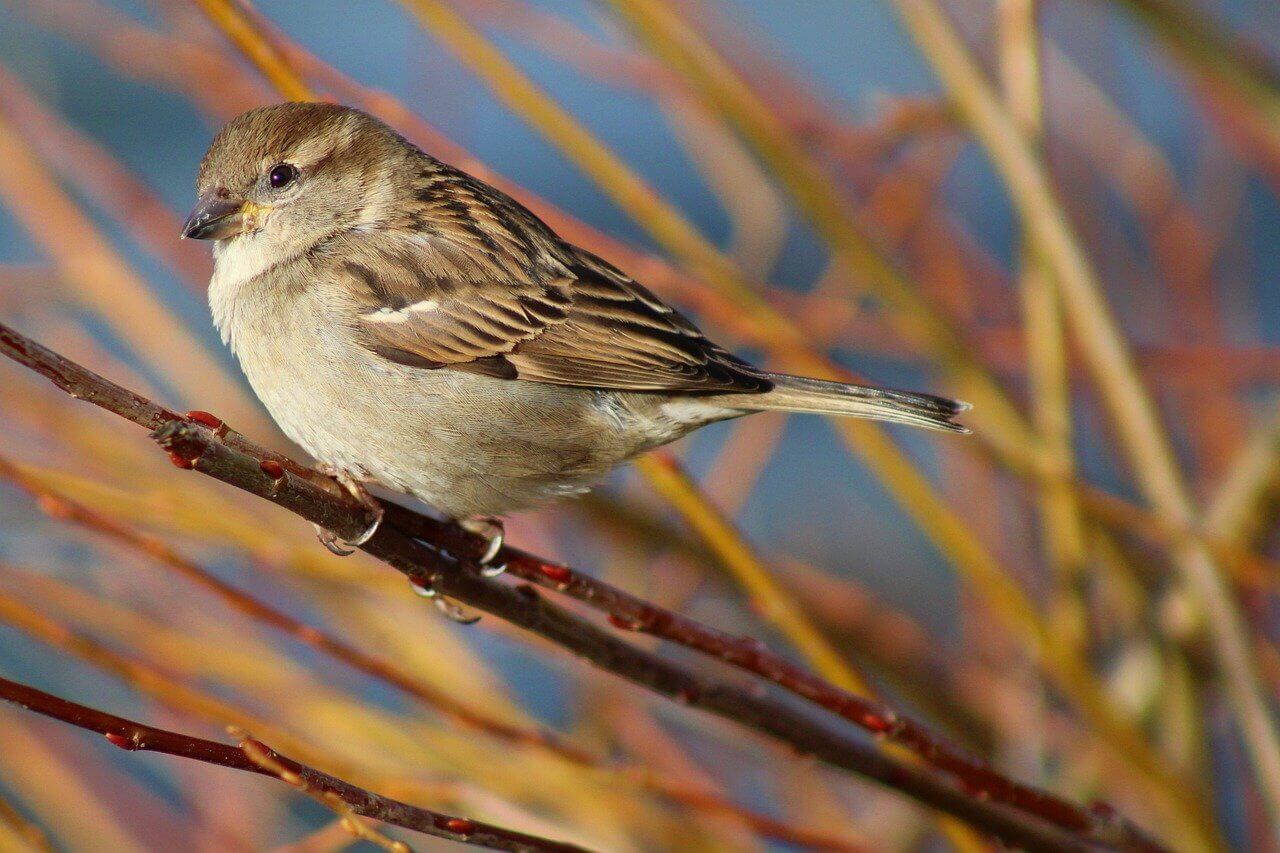Home sparrows thrive close to people—their identify comes from their affinity for nesting in or close to human-made constructions—and are probably the most frequent birds in North America. They prosper in each the countryside and cities and have even been noticed trying to find meals on an remark deck of the Empire State Constructing.
However coexisting with people isn’t all the time secure for these birds. A few of them are kidnapped from their properties in nature in order that experimenters can confine them to laboratories and topic them to merciless exams.
For World Sparrow Day (March 20), study extra about these exceptional birds and how one can assist PETA save them from lethal experiments.
Songbird Society
Sparrows are social people who keep collectively for all times in teams of as much as 40 members. They keep a classy social construction with acknowledged leaders and a transparent “pecking order.” Every male home sparrow’s place within the hierarchy is decided by the dimensions of a patch of black feathers on his throat and chest—the bigger the patch, the upper his rating within the colony. Increased standing comes with plentiful perks, equivalent to safer meals websites and greater and higher breeding territories.
Sparrows’ wealthy social group helps them reside in concord whereas they forage for meals, groom, and nest collectively. They impart with each other by utilizing numerous chirps and calls, attracting potential mates and alerting others to the presence of predators. They’re loyal to their clan, too. As soon as accepted right into a colony, a sparrow is rarely banished.
Inside this neighborhood, sparrows even have their very own households. Every male courts his desired associate, bowing and chirping in an brisk dance to draw her consideration. Pairs mate for all times, constructing a nest collectively and sharing parenting chores, together with incubating eggs and feeding their infants.
Home sparrows’ weight-reduction plan is colourful and diversified. They feed on bugs identified to hurt agricultural crops, forage for grains and seeds, and will assist with pollination by feasting on the nectar from flowering vegetation. They’re even identified to eat smashed bugs off parked vehicles.
Laboratories Are No Place for Birds
Of their pure habitat, sparrows have been identified to reside for greater than a decade. However within the laboratory of Louisiana State College experimenter Christine Lattin, these delicate people could be fortunate to final various months.
Lattin kidnaps her victims from their pure habitat after luring them into traps, ripping households aside and disrupting close-knit social teams within the course of. After hauling these captives again to her laboratory, she plops them into separate cages, additional isolating the naturally social birds earlier than subjecting them to pointless experiments.
In her newest junk exams, Lattin injects sparrows with chemical substances to break their brains. She exposes the birds to numerous unfamiliar objects that will frighten them in an effort to report their reactions. In previous experiments, she’s used brightly coloured gadgets like cocktail umbrellas and plastic eggs. Later, she kills them.
Lattin’s different experiments have included pumping sparrows stuffed with intercourse steroids and chopping child sparrows’ heads off to look at their brains.
Assist Free the Birds
Lattin’s experiments on sparrows will not be solely merciless but in addition do nothing to advance science. Please TAKE ACTION by urging the Nationwide Science Basis to cease funneling taxpayer cash into her pointless and lethal experiments:
Assist Sparrows in Laboratories
And when you’re a U.S. resident, please take an extra motion for animals in laboratories by supporting PETA’s Analysis Modernization Deal, which outlines a complete technique for changing all experiments on animals with more practical, human-relevant, non-animal strategies:


